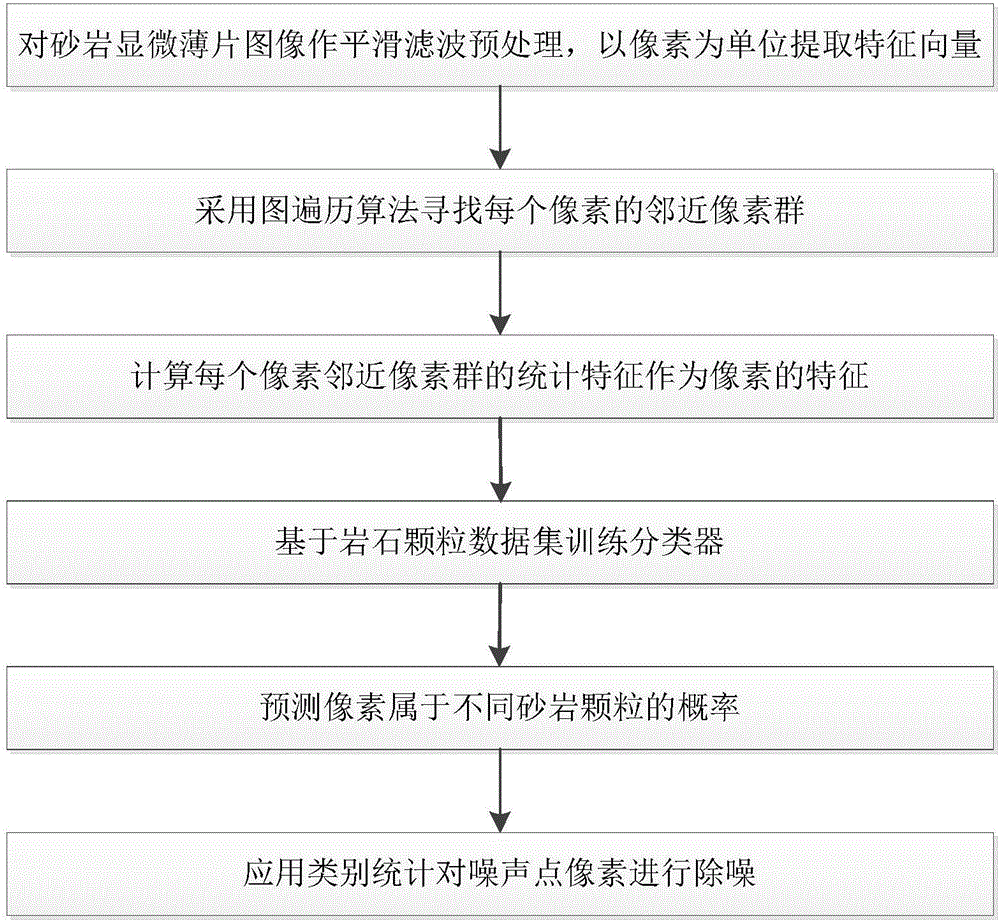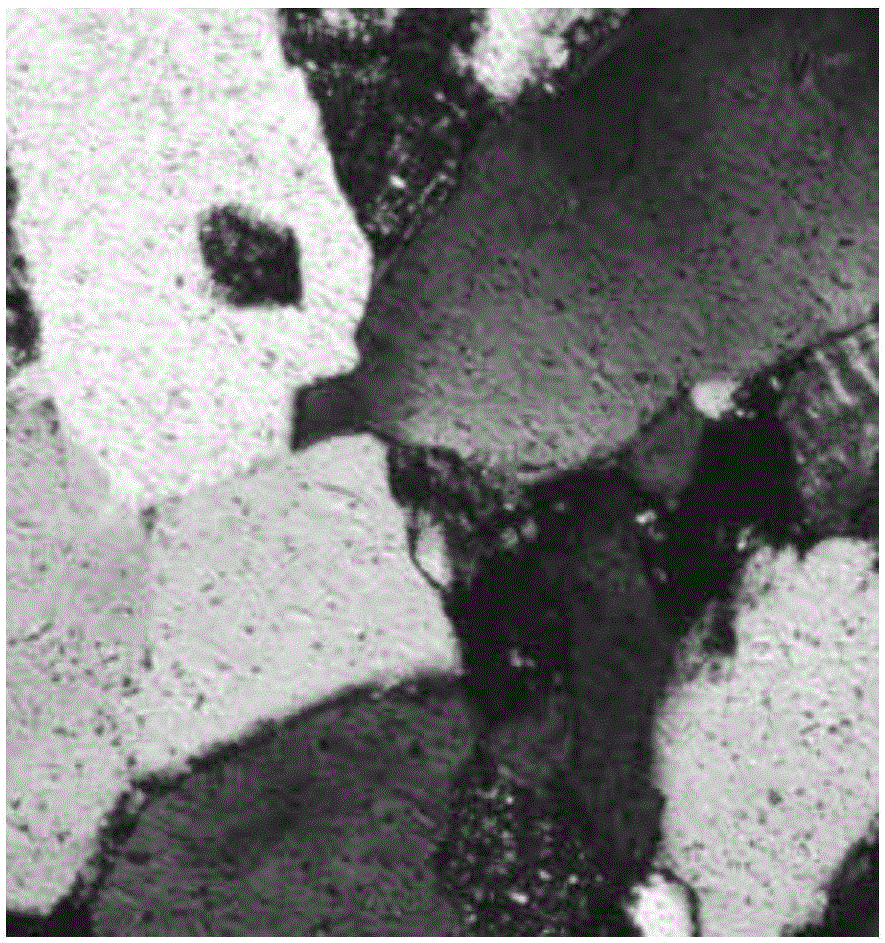Automatic recognition method for rock particles in sandstone microsection
An automatic identification and thin-film technology, applied in character and pattern recognition, instruments, computer components, etc., can solve the problems of large property differences, poor repeatability, and impurities, and achieve high accuracy, good scalability, and reduce time and cost effects
- Summary
- Abstract
- Description
- Claims
- Application Information
AI Technical Summary
Problems solved by technology
Method used
Image
Examples
Embodiment Construction
[0043] The main purpose of the present invention is to automatically identify rock particles in sandstone microscopic slices, use image processing technology and machine learning methods to extract color and texture features of pixels to form feature vectors, and find adjacent pixel groups based on graph traversal algorithm and similarity measurement. Calculate the statistical features of adjacent pixel groups as feature vectors for pixel classification; train a logistic regression classifier to distinguish quartz, feldspar and cuttings, and perform noise processing on the prediction results; through the prediction of pixel categories, realize the analysis of sandstone microscopic thin sections Automatic identification of rock particles.
[0044] figure 1Shown is the technical framework for automatic identification of rock particles in sandstone micro-sections. The input is a sandstone microscopic thin section image, and the output is the division and class of rock grains (qu...
PUM
 Login to View More
Login to View More Abstract
Description
Claims
Application Information
 Login to View More
Login to View More - R&D
- Intellectual Property
- Life Sciences
- Materials
- Tech Scout
- Unparalleled Data Quality
- Higher Quality Content
- 60% Fewer Hallucinations
Browse by: Latest US Patents, China's latest patents, Technical Efficacy Thesaurus, Application Domain, Technology Topic, Popular Technical Reports.
© 2025 PatSnap. All rights reserved.Legal|Privacy policy|Modern Slavery Act Transparency Statement|Sitemap|About US| Contact US: help@patsnap.com



